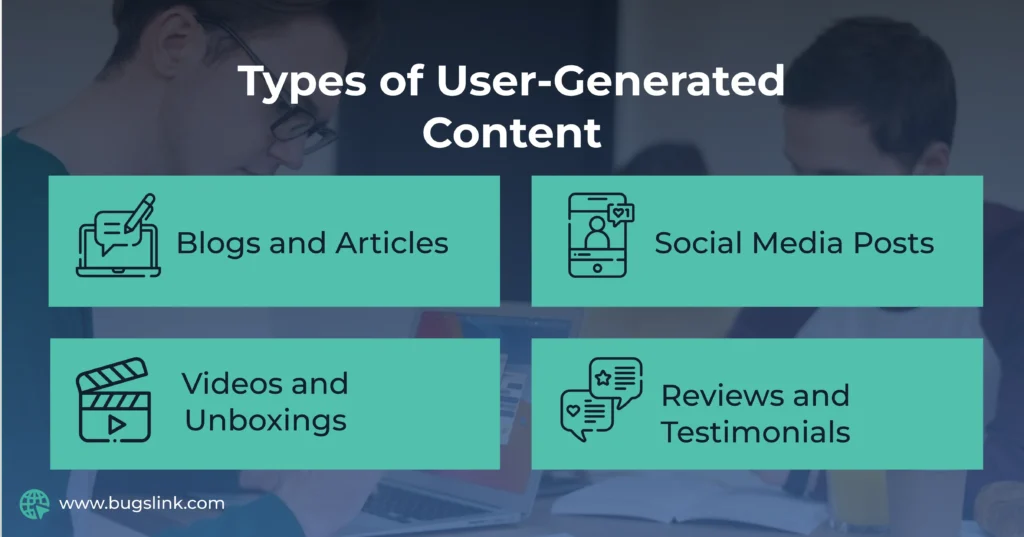User-generated content (UGC) has become a pivotal force in modern marketing strategies, with brands across industries capitalizing on its authenticity and engagement. By encouraging customers to create content, brands can increase their reach, boost trust, and build a more relatable image. This article will explore how to harness UGC to enhance your marketing campaigns effectively.
What is UGC?
User-generated content refers to any form of content—such as text, images, videos, reviews, or blog posts created by consumers or fans of a brand rather than by the brand itself. UGC offers an organic and authentic perspective, making it more relatable and trustworthy for potential customers.
Benefits of UGC for Brands

- Increased Brand Engagement: When customers create content related to a brand, they form a closer bond with it. This organic connection leads to higher levels of engagement, as consumers are more likely to comment, share, and interact with posts from their peers rather than from businesses.
- Building Trust: UGC is trusted by consumers because it comes from real people. Unlike branded ads, which can sometimes feel polished and scripted, UGC offers a raw and genuine glimpse into a brand’s value. This authenticity is critical in building long-term customer loyalty.
- Cost-Effective Marketing Solutions: One of the most attractive benefits of UGC is its cost-effectiveness. Since customers create the content, businesses can save on production costs while maintaining a solid online presence. Additionally, UGC often outperforms traditional marketing content in terms of engagement rates.
Types of User-Generated Content

- Social Media Posts: One of the most common forms of UGC is social media posts. Brands often encourage customers to share photos or videos of their products using specific hashtags, which can be shared on the brand’s official account.
- Reviews and Testimonials: Customer reviews are the oldest form of UGC. They provide invaluable social proof, helping potential buyers make informed purchasing decisions. Many brands display reviews prominently on their websites to build trust.
- Videos and Unboxings: Video content, such as product unboxing or tutorials, has become increasingly popular. These videos often go viral, offering brands massive exposure through authentic customer experiences.
- Blogs and Articles: Some users dive deeper into a brand’s offerings by writing full-length articles or blogs. These pieces of content often include personal experiences, tips, and recommendations, making them highly influential.
How to Encourage UGC from Your Audience
- Social Media Campaigns: One effective way to encourage UGC is by launching social media campaigns. By creating a catchy hashtag or theme, brands can inspire customers to post content related to the campaign.
- Encouraging UGC with Contests: Offering incentives like discounts, freebies, or contest entries can motivate customers to create and share content. Contests are particularly effective in quickly generating a large amount of high-quality UGC.
- Providing Clear Guidelines: To ensure consistency and quality in UGC, brands should give clear guidelines. These can include tips on what type of content to create, the preferred format, and specific hashtags to use.
Leveraging UGC for Social Proof
- The Power of Reviews and Testimonials: UGC plays a significant role in providing social proof. Positive reviews and testimonials from actual customers help build trust, making it easier for new customers to commit to a purchase.
- Showcasing Customer Stories in Marketing Campaigns: Some brands take UGC to the next level by incorporating customer stories into their official marketing campaigns. This approach not only provides powerful testimonials but also helps humanize the brand.
Best Practices for UGC Campaigns
- Authenticity is critical to a successful UGC campaign. Brands should avoid overly controlling or editing customer content to preserve its original, genuine appeal.
- Legal considerations of brands are crucial, such as obtaining permission from content creators and ensuring that the use of UGC complies with copyright laws.
- Monitoring and moderating content to avoid inappropriate or off-brand material associated with the brand is essential.
How UGC Improves SEO
- Increasing Organic Traffic: UGC can significantly boost SEO by increasing organic traffic. When customers create content about a brand, they often link back to the brand’s website, improving search engine rankings.
- Enhancing Website Authority: Customer reviews are a form of fresh, relevant content that search engines prioritize. Regularly updated reviews can enhance a website’s authority and visibility on search engine result pages.
Integrating UGC into Your Marketing Strategy
- Multi-Channel UGC Integration: UGC can be integrated across multiple marketing channels, including social media, websites, emails, and paid advertising. This multi-channel approach ensures maximum reach and engagement.
- UGC on Websites, Emails, and Ads: Displaying UGC on product pages, featuring it in marketing emails, or incorporating it into ad campaigns can boost conversions and engagement by providing potential customers with relatable and trustworthy content.
Tools to Track and Manage UGC
- UGC Platforms and Software: Managing and tracking UGC can be complex, but several tools make this process easier. Platforms like TINT, Bazaarvoice, and Yotpo allow brands to efficiently gather, curate, and display UGC across different channels.
- Measure UGC Campaign Success: Success in UGC campaigns can be measured using a variety of metrics, including engagement rates, social shares, and conversion rates.
Overcoming Challenges in UGC Marketing
- Negative reviews and feedback are inevitable but can be used constructively. Address negative comments professionally. Sometimes, negative feedback can be turned into positive experiences by resolving issues publicly and demonstrating a commitment to customer satisfaction.
- Avoid oversaturation of brands by selectively showcasing the best and most relevant content. Curating UGC ensures that only high-quality, on-brand material is used, maintaining a clear and consistent message.
Future Trends in UGC Marketing
- Rise of Video-Based UGC: Video-based UGC is rising as video content continues to dominate digital marketing. Platforms like TikTok and Instagram Reels have made it easier for users to create and share short-form video content, and brands are increasingly leveraging this trend. Expect to see more brands incorporating customer-made videos into their campaigns, as video content often leads to higher engagement rates compared to static images or text.
- The Role of AI in Analyzing UGC: Artificial intelligence (AI) plays an increasingly prominent role in analyzing UGC. AI tools can scan large volumes of content, detecting trends, sentiments, and potential issues much faster than human teams. AI-driven analytics also give brands deeper insights into customer preferences, enabling more effective and personalized marketing strategies based on UGC.
Conclusion
User-generated content (UGC) is crucial in marketing as it connects brands with their audience, builds trust, and improves engagement. By following best practices, strategically utilizing UGC, and using tools for tracking effectiveness, brands can create successful campaigns. Successful UGC campaigns lead to increased customer loyalty, improved SEO performance, and a more engaged audience.
FAQs
User-generated content (UGC) boosts authenticity and trust, which resonates more with potential buyers. It also helps brands increase engagement.
Brand content allows businesses to craft their narrative and convey their values, fostering emotional connections with consumers. It also positions the brand as an authority in its industry.
Content marketing drives traffic, builds customer trust, and improves brand visibility through relevant content. It nurtures leads and converts them into loyal customers over time.

